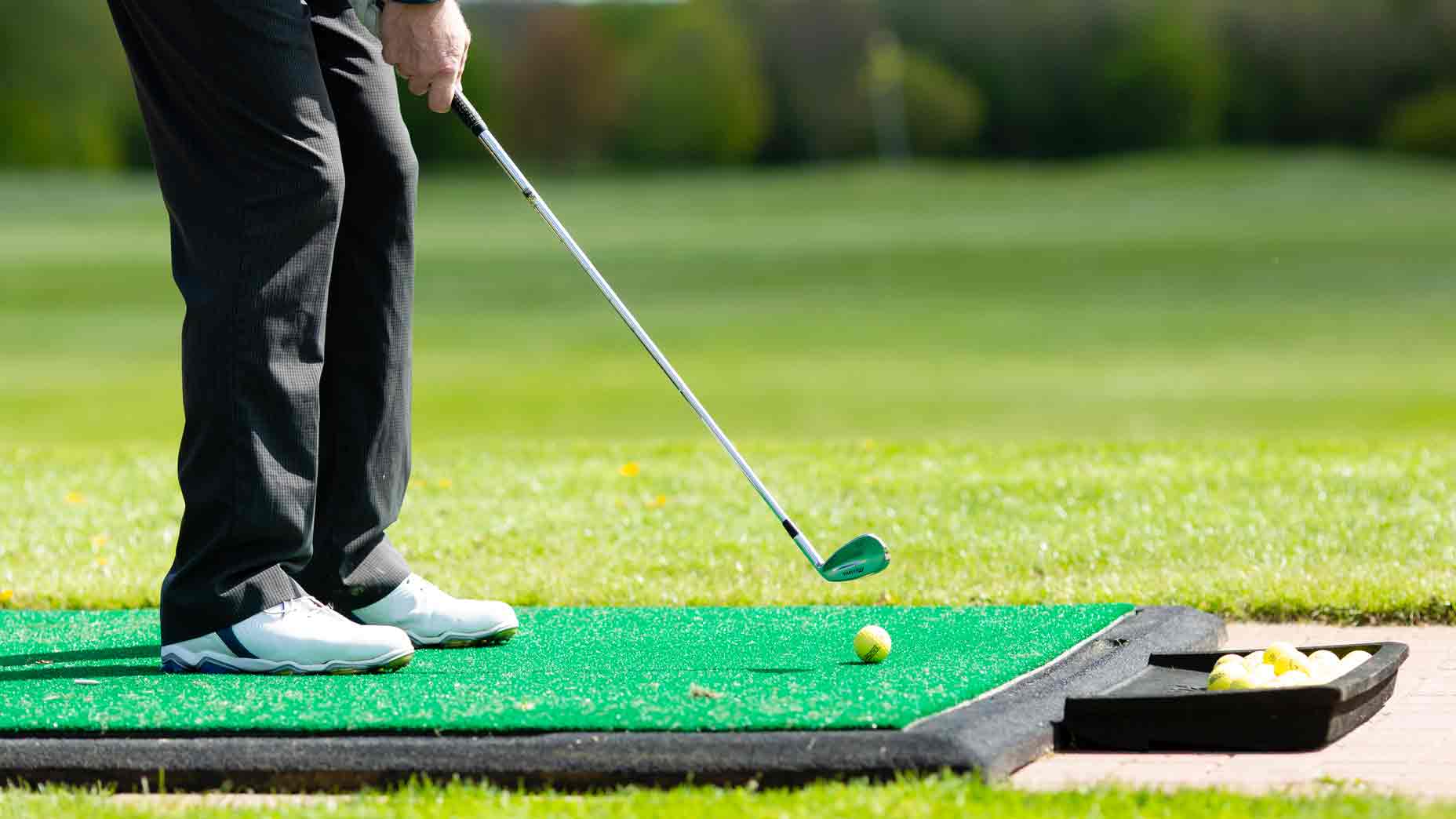How well do you use ground forces in your swing? Here’s a simple way to find out
- Share on Facebook
- Share on Twitter
- Share by Email

A simple test can tell you a lot about your swing.
Getty Images
InsideGOLF: +$140 Value
Just $39.99
A simple test can tell you a lot about your swing.
Getty Images
A golfer’s ability to utilize the ground to generate power has become a hot topic over the last several years, especially with the emergence of ultra-long bombers like Bryson DeChambeau, and recreational players who are looking to increase their clubhead speed and distance are thinking about ground forces in new ways.
Dr. Scott Lynn knows a bit about that. As the Director of Research and Education at Swing Catalyst, Lynn’s work has helped countless players maximize their potential. In an appearance on this week’s episode of Off Course with Claude Harmon, he explained an easy way that golfers can learn more about their ground interaction with a simple self test.
While Lynn acknowledges that there is no perfect, one-size-fits-all test, he presented an easy way to get a feel for how you’re swinging at home. The first step? Put your feet super close together and take some swings with a mid-iron.
“Just evaluate how far the ball’s going,” he said. “If you have a launch monitor and you can look at clubhead speed and ball speed, that’s great. If you don’t have a launch monitor, you can just kind of evaluate: How solidly am I hitting it? How far is the ball going? Is it curving a lot? What you’ll notice with your feet together — obviously you can’t move side-to-side very much, because if you do, you’ll fall over. So that kind of limits the amount that you can go side-to-side.”
The other thing you can’t do very easily with your feet together? Jump off the ground.
Why knowing your golf swing ‘type’ can help you improve on your ownBy: Jessica Marksbury
“So what do they do? They have to learn how to spin, or rotate,” Lynn said. “So if you’re really good at rotating, and you’re a centered player — we call that a non-leg-dominant player. So we don’t have one leg that’s more dominant than the other. So if you hit the ball best in that situation, then you’d say, ‘Okay, I’m probably a centered player, and I gotta learn how to rotate better and keep my pressure shift kind of in that mid-range.'”
The next part of the self-test is taking the same swing, but dropping one foot back at a time.
“Evaluate which of those conditions is the best for you,” Lynn said, noting that people are often surprised when the leg that tends to absorb all their swing pressure feels weak and unstable on its own.
“[The test] is a really good eye-opener for a lot of people,” he said, commenting that some players will hit it well with their feet together while others will stripe it from one leg.
If you find you are a rotationally-dominant player by hitting it well with your feet together, Lynn says one way to take advantage of that would be to narrow your stance, to further encourage that rotation.
For more from Lynn, including why identifying your swing type can help you improve, and why biomechanics matter in golf, check out the full interview below.

Golf.com Editor
As a four-year member of Columbia’s inaugural class of female varsity golfers, Jessica can out-birdie everyone on the masthead. She can out-hustle them in the office, too, where she’s primarily responsible for producing both print and online features, and overseeing major special projects, such as GOLF’s inaugural Style Issue, which debuted in February 2018. Her original interview series, “A Round With,” debuted in November of 2015, and appeared in both in the magazine and in video form on GOLF.com.